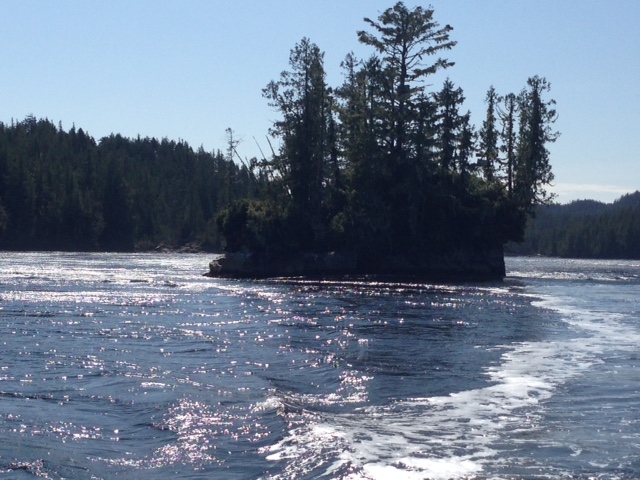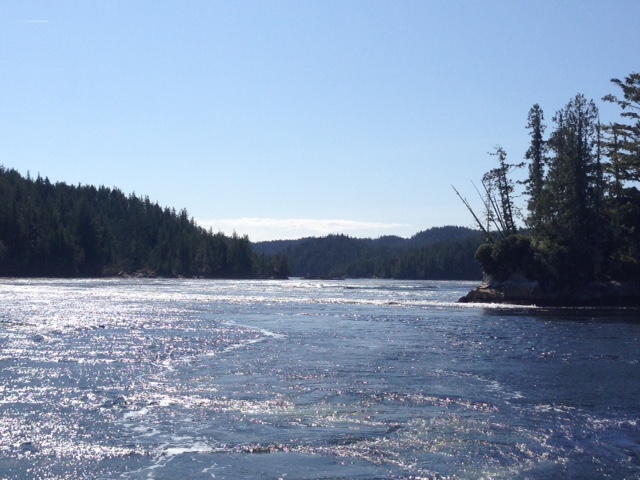Only the most experienced skippers can navigate the Nakwakto Rapids safely.

About an hour’s boat ride from Port Hardy you will find the fastest tidal surge in the world.
The world’s fastest ocean whitewater can run up to 17 knots during peak tidal changes as the ocean is forced through narrow channels and islands.
At the narrowest point of the Seymour Inlet sits Tremble Island, which is reported to shake with the force of the tidal flows.
One legend tells of how a land surveyor stayed on Tremble Island, but the land vibrated so violently he was forced to lie and cling to the grass and bushes.
A number of signs can be seen on the island, left by the crews of ships trying to get in and out of Seymour Inlet. Some of the signs date back more than 100 years.
There is only a three minute window at certain times of the day where a skipper can safely approach Tremble Island to allow people to climb aboard.
The rapids are also the gateway to the Great Bear Rainforest and are part of First Nations traditional territory.

Tours from the Gwa’sala and ‘Nakwaxda’xw Nations in Port Hardy take tourists to see the Nakwakto Rapids, an impressive site in itself, but there’s more to learn about the region.
“These tours that are starting up give our people a sense of belonging again,” said Davis Henderson, tourism coordinator for the K’awat’si Tourism Company.
In the 1960s, the federal government wanted members of the Gwa’sala-‘Nakwaxda’xw Nations to move from the islands off the coast of Vancouver Island to Port Hardy.
But Henderson says, when the First Nations families moved to the mainland the government destroyed their homes on these remote islands so they had nothing to return to.
Now, part of the tour involves going to see a site where First Nations members used to live before they were moved.
“We are trying to tap into the other industries to advance tourism and enhance cultural tours,” said Henderson. “That’s the challenge, showing people our culture while trying to retain what’s important to us.”
All that’s left on one of the islands are some wooden beams once used to help hold up the roof of someone’s house. Pieces of glass and fragments of their belongings can also still be seen on the beach.
“We are slowly getting back to where we need to be as a community.”
WATCH: The community in Port Hardy is trying to draw more adventure tourism to the region, but some tourists want to be pampered. As Kylie Stanton reports, the local First Nation is renovating a hotel to provide a level of luxury Port Hardy has never had.
























Comments